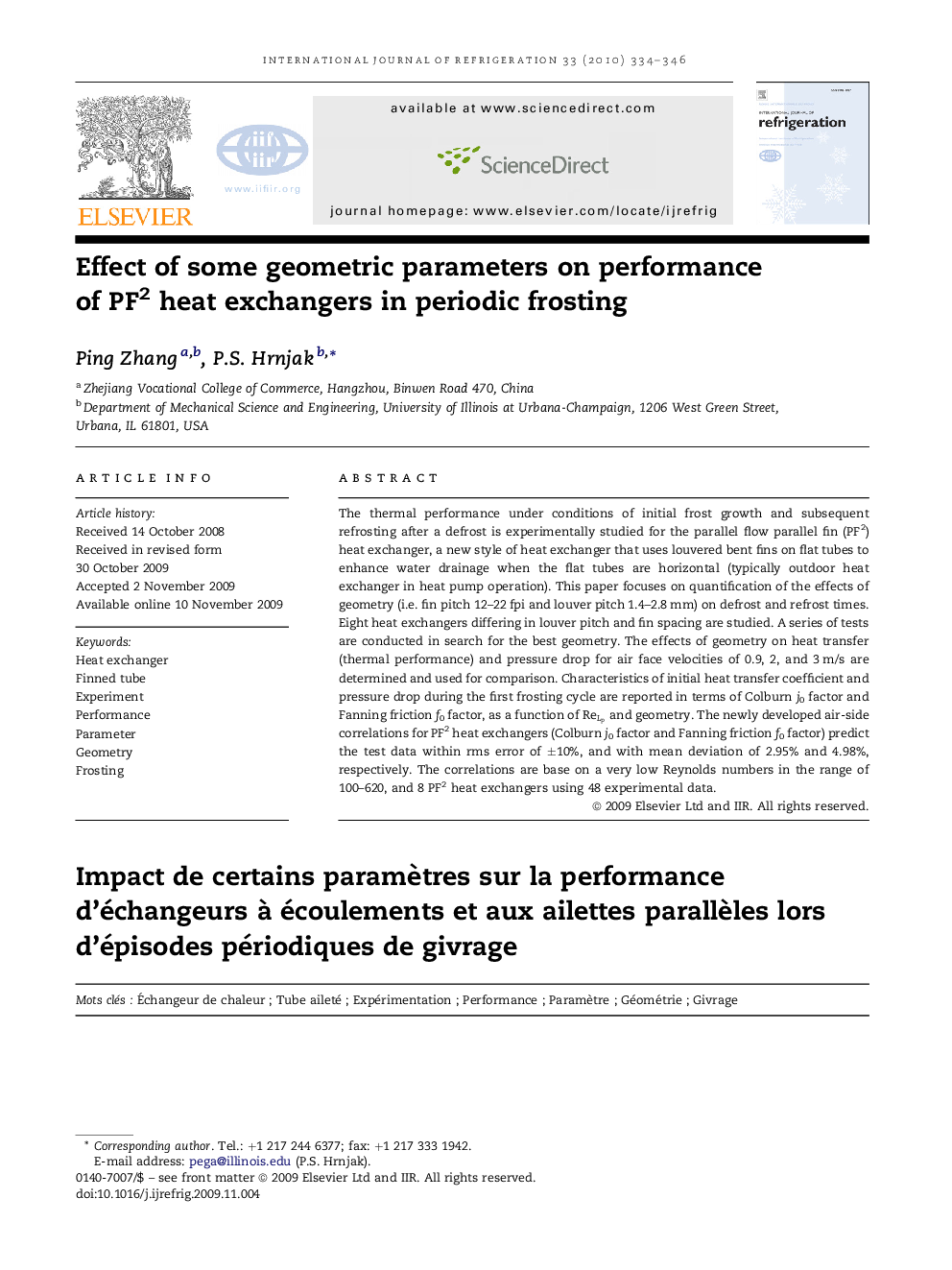| Article ID | Journal | Published Year | Pages | File Type |
|---|---|---|---|---|
| 790540 | International Journal of Refrigeration | 2010 | 13 Pages |
The thermal performance under conditions of initial frost growth and subsequent refrosting after a defrost is experimentally studied for the parallel flow parallel fin (PF2) heat exchanger, a new style of heat exchanger that uses louvered bent fins on flat tubes to enhance water drainage when the flat tubes are horizontal (typically outdoor heat exchanger in heat pump operation). This paper focuses on quantification of the effects of geometry (i.e. fin pitch 12–22 fpi and louver pitch 1.4–2.8 mm) on defrost and refrost times. Eight heat exchangers differing in louver pitch and fin spacing are studied. A series of tests are conducted in search for the best geometry. The effects of geometry on heat transfer (thermal performance) and pressure drop for air face velocities of 0.9, 2, and 3 m/s are determined and used for comparison. Characteristics of initial heat transfer coefficient and pressure drop during the first frosting cycle are reported in terms of Colburn j0 factor and Fanning friction f0 factor, as a function of ReLpReLp and geometry. The newly developed air-side correlations for PF2 heat exchangers (Colburn j0 factor and Fanning friction f0 factor) predict the test data within rms error of ±10%, and with mean deviation of 2.95% and 4.98%, respectively. The correlations are base on a very low Reynolds numbers in the range of 100–620, and 8 PF2 heat exchangers using 48 experimental data.
